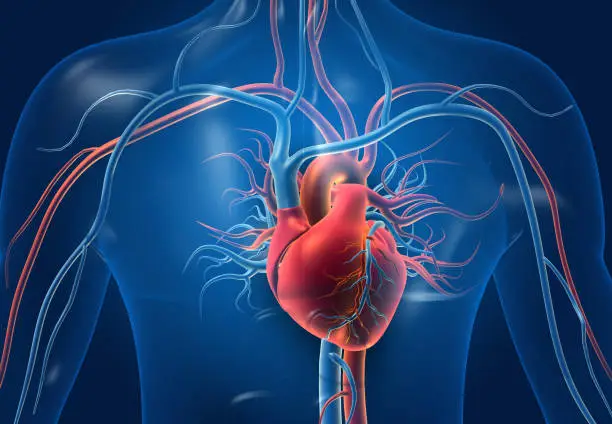Understand how carbonic acid therapy enhances blood flow and supports vascular health.
Healthy blood circulation is the cornerstone of vitality. From delivering oxygen to tissues to transporting nutrients, and removing metabolic waste, our vascular system works tirelessly every second. When circulation weakens, it can compromise energy, slow recovery, and undermine long-term cardiovascular health.
One lesser-known but increasingly studied factor in circulation is carbonic acid. While many recognize carbon dioxide (CO₂) as the gas we exhale, few understand how its interaction with water in the body forms carbonic acid – a compound with surprising benefits for vascular health. In both natural physiology and therapeutic applications, carbonic acid plays a unique role in supporting blood flow, reducing inflammation, and even aiding recovery.
Mechanisms of Carbonic Acid and Circulation
At its core, carbonic acid is a simple compound formed when carbon dioxide (CO₂) dissolves in water (H₂O). The reaction produces H₂CO₃, a weak acid that naturally exists in our blood, tissues, and even the fluids we exhale.
Its primary role in the body is maintaining acid-base balance, which helps regulate pH in the blood. Carbonic acid also influences vascular tone, meaning how wide or narrow blood vessels become. This makes it a subtle, but powerful mediator of circulation.
Every time you breathe, carbonic acid levels shift slightly. This constant adjustment keeps tissues supplied with oxygen and helps maintain stable blood flow. How exactly does carbonic acid impact circulation? Several mechanisms are at play.
- Vasodilation effects: Carbonic acid has a natural relaxing effect on vascular smooth muscles. As blood vessels relax and open, circulation improves, delivering oxygen and nutrients more effectively throughout the body. This is crucial for reducing strain on the heart and ensuring efficient delivery of oxygen.
- Microcirculation enhancement: The smallest vessels, capillaries, are responsible for delivering oxygen and nutrients directly to cells. Carbonic acid helps open these micro-vessels, improving nutrient exchange and cellular recovery.
- Blood flow regulation: Carbonic acid participates in balancing arterial (outward flow from the heart) and venous (return flow back to the heart) circulation. This balance helps prevent pooling, swelling, and sluggish blood flow, especially in the extremities.
Through these mechanisms, carbonic acid supports a healthier, more flexible vascular system.
Carbonic Acid Therapy Applications
The therapeutic use of carbonic acid is not new. In fact, it has roots in spa medicine and has been used for centuries in natural springs rich in dissolved CO₂. Today, therapy applications are more structured and researched:
- Balneotherapy: Immersion in carbonic acid baths, often called CO₂ spas, is a traditional practice in parts of Europe and Asia. These baths allow carbonic acid to be absorbed through the skin, triggering vasodilation and improved circulation throughout the body.
- Topical therapies: Modern formulations deliver carbonic acid transdermally. Creams, gels, and patches create localized vasodilation, improving circulation in targeted areas such as legs or joints where blood flow may be compromised.
- Medical use: In clinical settings, carbonic acid therapy is being explored for conditions such as peripheral artery disease, diabetic vascular complications, and slow-healing wounds. By boosting circulation and oxygenation, it may accelerate tissue repair and recovery.
These applications show how a simple compound can have profound systemic effects when harnessed properly.
Benefits for Vascular Health
The potential benefits of carbonic acid for vascular health are both broad and impactful. By influencing circulation at a fundamental level, carbonic acid therapy can complement modern approaches like ozone saunas and other detox therapies, creating a synergistic path toward a true wellness upgrade.
Improved Endothelial Function
The endothelium, the delicate inner lining of blood vessels, controls vascular tone and helps regulate blood pressure. When endothelial cells become stiff or unresponsive, circulation suffers, raising the risk of hypertension, arterial plaque buildup, and heart strain.
Carbonic acid improves endothelial responsiveness by encouraging vessels to expand more easily, thereby reducing vascular resistance and enhancing oxygen-rich blood flow. For individuals seeking a long-term strategy for cardiovascular resilience, this mechanism is particularly valuable.
Reduced Inflammation and Oxidative Stress
Poor circulation often leads to localized inflammation, oxidative stress, and cellular damage. Carbonic acid boosts oxygen delivery to tissues, which in turn lowers free radical activity and inflammatory markers in the vascular system.
This anti-inflammatory effect can help reduce discomfort, slow vascular aging, and protect against chronic disease. Paired with an ozone sauna, which also supports systemic detoxification and oxygenation, the anti-inflammatory benefits become even more pronounced.
Faster Recovery and Performance Support
Athletes and fitness enthusiasts are increasingly turning to carbonic acid therapies for faster recovery. By enhancing circulation, carbonic acid helps clear lactic acid more quickly, reducing soreness and stiffness after intense exercise.
It also accelerates the delivery of nutrients to muscles, speeding tissue repair and overall recovery. When integrated with a detox therapy routine such as alternating ozone sauna sessions with carbonic acid baths, athletes may notice higher energy, reduced downtime, and improved performance outcomes.
Support for Chronic Conditions
For individuals struggling with vascular challenges like peripheral artery disease, varicose veins, or diabetes-related circulation issues, carbonic acid therapy offers a non-invasive and gentle option to restore blood flow.
Enhanced microcirculation not only eases discomfort, but also supports wound healing and tissue regeneration, which are often compromised in chronic conditions. Combining carbonic acid treatments with guided circulation therapies, targeted nutrition, and ozone saunas creates a layered approach that addresses the root causes of poor vascular health.
Conclusion
The humble carbonic acid may not sound like a game-changer, but its role in circulation and vascular health is both fundamental and profound. By relaxing blood vessels, improving microcirculation, and enhancing oxygen delivery, carbonic acid supports both everyday vitality and long-term vascular resilience. Improving circulation doesn’t always require complex interventions. Sometimes, nature already has the answer.
Visit Innovative Wellness Consultants today. Our team can guide you in exploring whether carbonic acid therapy is right for you.







